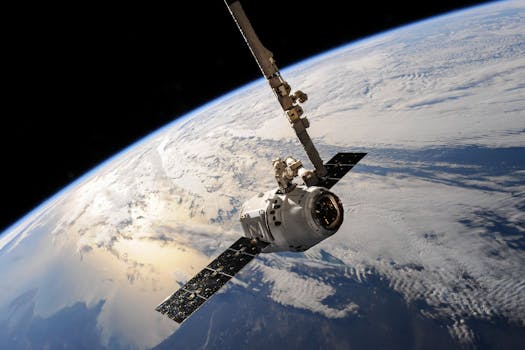
Unlocking the Power of GEO Satellites for Global Connectivity
GEO satellites, or Geostationary Earth Orbit satellites, are a type of satellite that orbits the Earth at an altitude of approximately 36,000 kilometers, remaining stationary relative to a fixed point on the equator. This unique characteristic allows GEO satellites to provide continuous coverage of a specific region, making them ideal for a wide range of applications, including communication, navigation, and remote sensing.
The use of GEO satellites has revolutionized the way we communicate, navigate, and monitor the Earth’s surface. With the ability to provide high-bandwidth connectivity, GEO satellites enable the transmission of large amounts of data, including video, voice, and internet traffic. This has enabled the deployment of broadband services, including internet, television, and telephony, to remote and underserved areas, bridging the digital divide and promoting global connectivity.
In addition to communication applications, GEO satellites are also used for navigation purposes. The Global Positioning System (GPS), for example, relies on a constellation of GEO satellites to provide location information and timing signals to GPS receivers on the ground. This enables accurate navigation, tracking, and mapping, which is essential for various industries, including aviation, maritime, and transportation.
Remote sensing is another significant application of GEO satellites. These satellites are equipped with sensors and cameras that can capture high-resolution images of the Earth’s surface, providing valuable data for weather forecasting, climate monitoring, and natural resource management. For instance, GEO satellites can track changes in ocean currents, sea level rise, and ice sheet melting, helping scientists to better understand the impacts of climate change.
How GEO Satellites Work
GEO satellites operate by transmitting and receiving signals to and from Earth stations, which are located on the ground. The signals are transmitted through a large antenna, which is pointed towards the satellite, and received by a smaller antenna on the satellite. The satellite then amplifies and retransmits the signal back to Earth, where it is received by another Earth station. This process allows for continuous communication between two points on the Earth’s surface, enabling global connectivity.
One of the key benefits of GEO satellites is their ability to provide high-bandwidth connectivity over long distances. This makes them ideal for applications that require large amounts of data to be transmitted, such as video conferencing, online gaming, and cloud computing. Additionally, GEO satellites can provide backup connectivity in case of fiber optic cable outages or other network failures, ensuring that critical communication services remain available.
Challenges and Limitations of GEO Satellites
Despite the many benefits of GEO satellites, there are also several challenges and limitations associated with their use. One of the main challenges is the high latency of GEO satellite communications, which can range from 250 to 300 milliseconds. This latency can make real-time applications, such as video conferencing and online gaming, difficult to use. Additionally, GEO satellites are susceptible to interference from other satellites and terrestrial sources, which can affect the quality of the signal.
Another limitation of GEO satellites is their limited bandwidth capacity. As the demand for satellite connectivity continues to grow, the available bandwidth on GEO satellites is becoming increasingly scarce. This has led to the development of new satellite technologies, such as High-Throughput Satellites (HTS) and Very High-Throughput Satellites (VHTS), which offer higher bandwidth capacities and more efficient use of spectrum.
Future of GEO Satellites
The future of GEO satellites looks promising, with ongoing advancements in technology and the development of new applications. One of the most significant trends in the satellite industry is the growth of satellite constellations, which involve the deployment of large numbers of small satellites in low Earth orbit. These constellations offer several benefits, including lower latency, higher bandwidth capacity, and improved coverage.
Another area of development is the use of GEO satellites for 5G and IoT applications. As the demand for low-latency, high-bandwidth connectivity continues to grow, GEO satellites are being explored as a potential solution for providing coverage in areas where terrestrial networks are limited or non-existent. This could enable a wide range of new applications, including smart cities, industrial automation, and autonomous vehicles.



